Some of the best ways to climb and avoid injury are free. Some of the most valuable lessons can also be learned through injury. The journey to return to climbing will transform the reason you loved climbing in the first place, often rooting that desire and enjoyment to climb even deeper.
Like other athletes, one of the best ways to improve your performance, and reduce the chance of future injuries is to analyze your game tape. For climbers that means having a friend film your climb.
Remember-you can perform all the self treatment and prehab exercises in the world, but if you aren’t moving well, it will only be a matter of time before your body will eventually say no. Instead, get proactive! Watching yourself climb on video can help with more than just being a better and healthier climber by:
- Building efficiency and endurance in your climbing
- Becoming more self aware of your body before, during, and after you climb
- Learning more climbing techniques and different ways to tackle the same route
- Practicing healthier self-care habits
- Gaining a clearer idea of how you can continue to improve your climbing, instead of struggling at a plateau, overclimbing to compensate, and putting yourself at more risk of injury
What to look for in your playback
With this footage you now have clear line of sight to the techniques you use, and your posture throughout.
Play the video multiple times, slow it down if you need.
Change where your focus is. Maybe just the footwork the first time, your back and neck the next time, your hands and arms, and then the full picture.
Watching yourself climb can help connect some dots. Where are you feeling things in your body after your climb, and why might that be happening?
Here are 8 movement inefficiencies to look for:
- Mobility limitations that keep you further away from the wall – this makes for a lot more work to transition holds, puts you at risk for the other postures below, and strengthens your muscles in the same dysfunctional way.
- Flaring your elbows out or up, instead of drawing them down and in towards you.
- Slouching through the back, shoulders or neck – depending on your stature and how vertical you are.
- Overreaching the arm through the shoulder blade without activation. Instead, draw the shoulder blades together as if holding an orange between them.
- Holding yourself up with arms bent. Instead, stabilize with the legs and hang with the arms relatively straight. Think about squatting yourself up the wall with your legs.
- Hanging dead weight from the shoulders without shoulder blade and upper back activation. This is a great way to make your rotator cuff and neck angry.
- Gripping in closed or half crimp the majority of the time, instead of open hand technique. The tension you hold here will be felt through the rest of your body. Relaxed hands are a good place to start.
- If you are belaying someone and watching them climb, gain awareness of your posture too. Slouching shoulders and back posture, or an overarched neck are key things to look out for. An extra option is to try some prism glasses to avoid holding a backwards bent neck for a prolonged period.
If you aren’t sure what good posture is...
Try slowing down when you climb and see what positions are unsustainable to hold or stabilize in. Drawing out your faults and weaknesses is one of the best ways to become a better, smarter climber. Climbing harder and longer will only get you so far.
How to apply changes
First apply these techniques on easy routes and see how you can adapt them for harder routes and holds. Once you know your weak points, you can begin to strengthen these areas, whether on or off the wall. Continue to film yourself and compare videos!
If you aren’t sure how to fix your climbing postures or techniques, or can’t figure out where they are coming from, then seeing an Athletic Therapist is a great way to go. It will help you discover better movement patterns, keep you out of pain, and on the wall!
Erin Marsh, CAT(C)
Erin has been an Athletic Therapist since 2017. She holds a Bachelor's Degree in Exercise Science from the University of Lethbridge, as well as an Athletic Therapy Advanced Certificate from Mount Royal University.
So far in her career, she has spent three years working with the University of Lethbridge varsity athlete teams, one year with the Southern Alberta Acute Knee Injury Clinic(SAAKIC), continues to offer care at Rebound Health Centre at the University of Lethbridge as well as at Rebound Performance Centre!
Her passion lies in her patients' goals, whether for Athletic Therapy, or FST (Fascial Stretch Therapy). She prides herself in a solid relationship of understanding and trust with every patient she works with, including enjoying the journey towards success, and learning something along the way.
Erin grew up on a beef and grain farm in rural central Alberta, and soon called Lethbridge home after completing her education. She enjoys running in the coulees, lifting heavy things in the gym, bouldering both indoors and outdoors, or playing in her garden. Her day wouldn't be complete without a little sarcasm, or a good pun.

